Hearing the name Sarajevo conjures up different historical memories and thoughts for me. The gunshot that started WWI, the Olympics of 1984, the Bosnian war and of course the Siege. So much strife and pain has been felt in this tortured capital of Bosnia and Herzegovina. Yet, today this resilient city is filled with diversity, tolerance, hope, light and laughter. Sarajevo is the heart of Bosnia and Herzegovina.

Remembering – Galerija 11/07/95
It is Sarajevo’s history and people that captured our hearts immediately. We wanted to learn more and with that we went to the Galerija 11/07/95. The gallery commemorates and documents the Srebrenica tragedy of 1995 as well as the Siege of Sarajevo during the Bosnian War between 1992 – 1995.
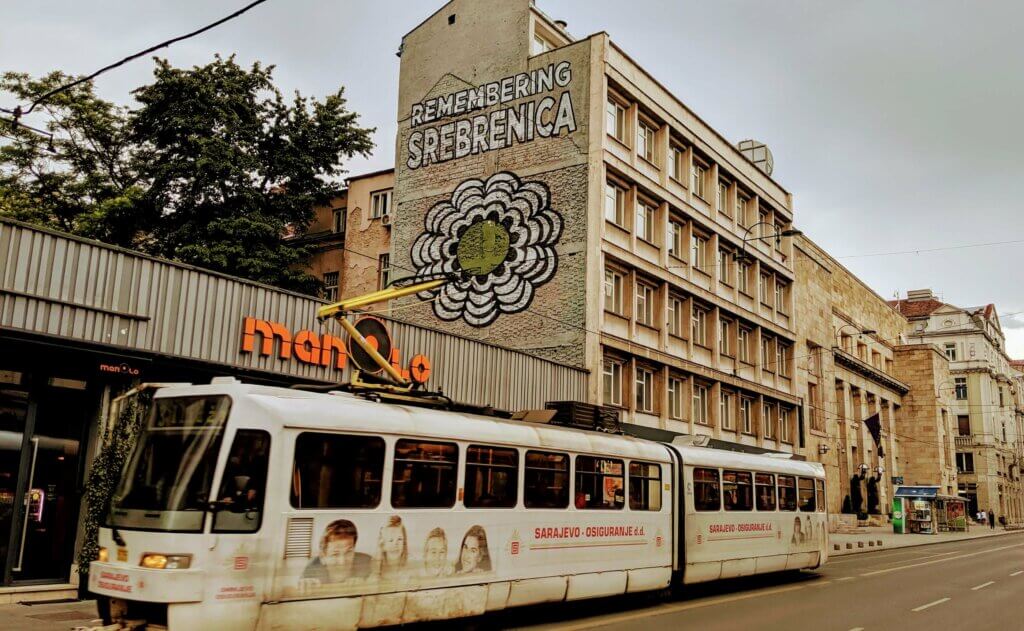
The gallery does a good job of combining photographs, media and audio to explain the horrific slaughter of more than 8,000 Bosnian Muslims in Srebrenica. Even though it was deemed a UN protected zone, the people of that area and those who fled there for protection were gravely failed. Failed by the international community, by the Dutch battalion which was stationed there to protect them and by NATO forces which did not send the air support they had promised.
People were rounded up, men and boys were separated from the women (although some women also perished). There was no time to say goodbye, just a quick separation with no return. There are mothers, wives, sisters and daughters who to this day have not found the remains of their loved ones.
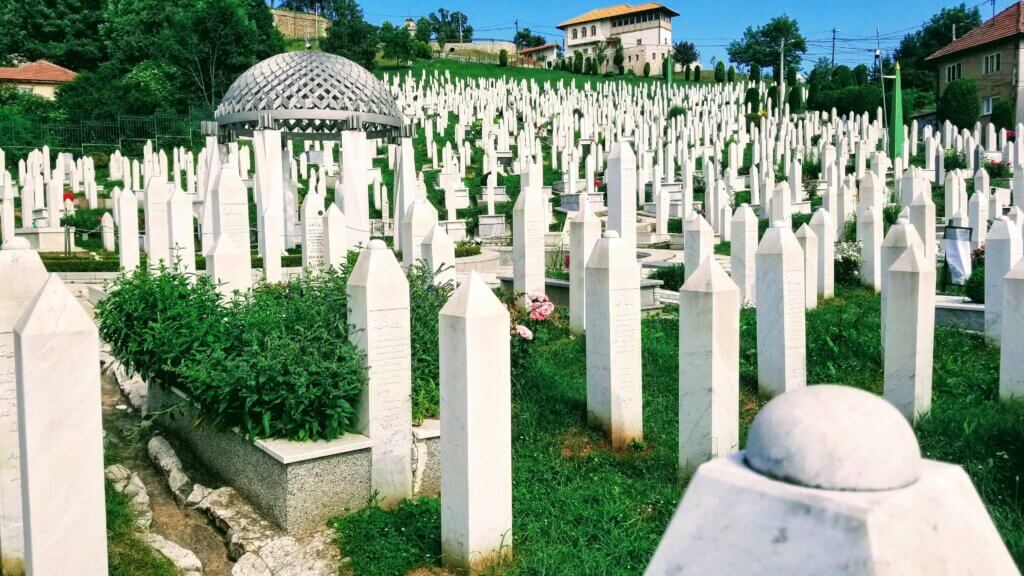
The gallery also shows the full feature movie called Ms. Sarajevo. A poetic and formidable documentary about the siege which was the longest of a capital city in the history of modern warfare. Almost 14,000 people died during this 3 year occupation.
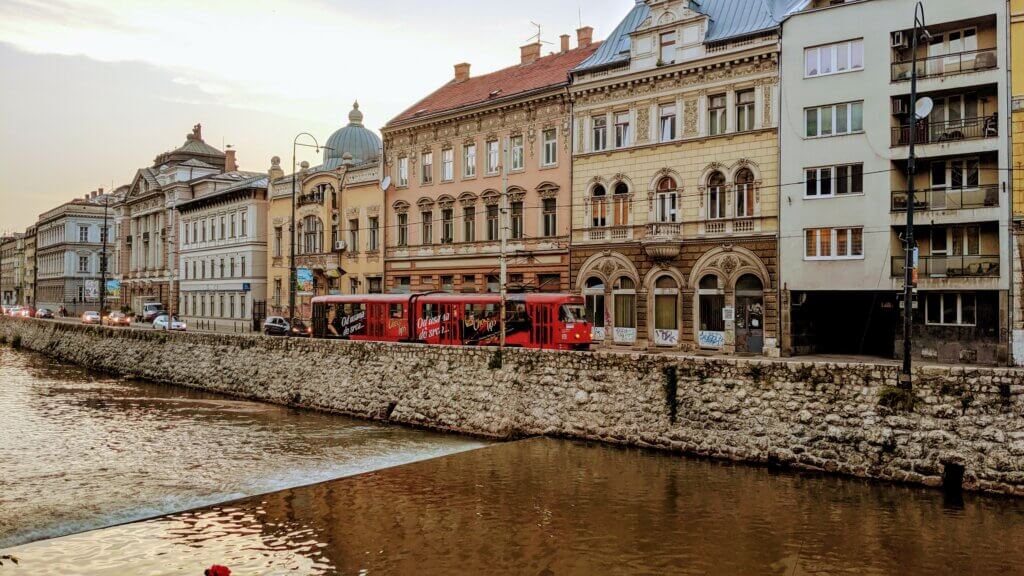
Today, this honorable and resilient city stands proud of it’s many wounds and tragic loses. Many of the buildings are still dilapidated and riddled with bullet holes. They were shelled daily at times, by artillery made to take down airplanes.
After watching this poignant movie we found ourselves walking the streets and recognizing so much of the city during the siege. Visiting the Galerija first was critical for me to put things in perspective and truly understand this city and it’s people.
How far back do we remember? I remember some to when I was 5 years old. I imagine most people do plus or minus a year or two. Therefore those in their early 30’s and older who still live in the capital must remember the fear, the shelling the hunger and loss every day.
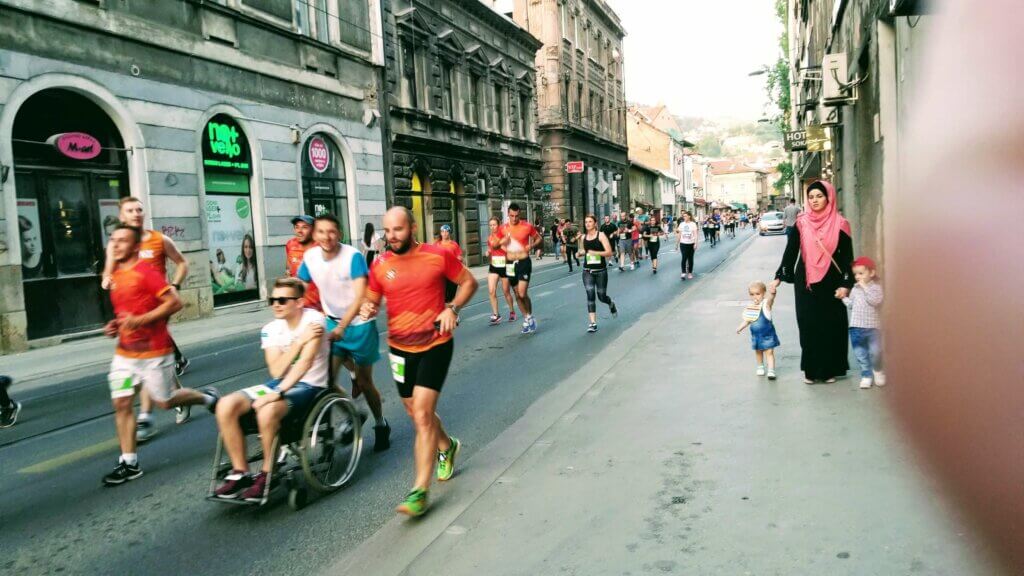
Sarajevo – Historical Places
Yet we did not see meek people. We saw proud, resilient and hopeful people who have learned somehow to look beyond. They learned to coexist civilly, harmoniously and respectfully which is exactly the same way that they lived prior to the war.
This capital is filled with beautiful historic mosques, some dating back to the the Ottoman Empire. Most notably the Emperor’s Mosque, which is Bosnia’s oldest opened in 1457 on Sarajevo’s River Miljacka. The Ali Pasha Mosque located near the Old Bazaar opened in 1561 in honor of one of the city’s first governors.
There are churches and synagogues all with much history, coexisting among the same streets. Most notably the Church of the Holy Archangels Michael and Gabriel dating back to the 16th century and the grand Cathedral of the Nativity of the Theotokos.
The Jewish Museum of Bosnia and Herzegovina is housed in the oldest synagogue in Bosnia and Herzegovina, built in 1581 and called the Old Synagogue.

Our hotel was along the River Miljacka and we enjoyed our daily walks towards the Old Bazaar. It has been the historical and cultural center of the city dating back to the 15th century. Among museums, galleries, restaurants and cafes are traditional copper shops selling multitudes of hand-made copper items.
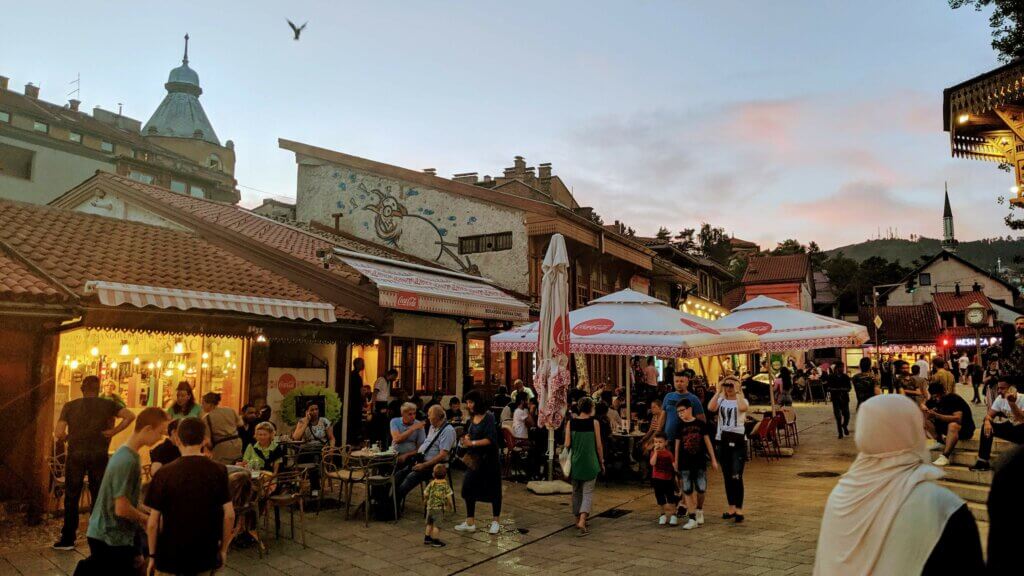
Among those cafes is a brilliant vegan one which we visited almost daily called Falafel. Just a cheerful little cafe inside one of the small cobblestone streets of the old bazaar. Very cozy, inexpensive place which has delicious food.
We spent a day climbing around the steep hills of Sarajevo, walking past a lot of graffiti commingled with Street Art and ruins of some castles. The White Castle (or what remains of it) is no longer open to the public.
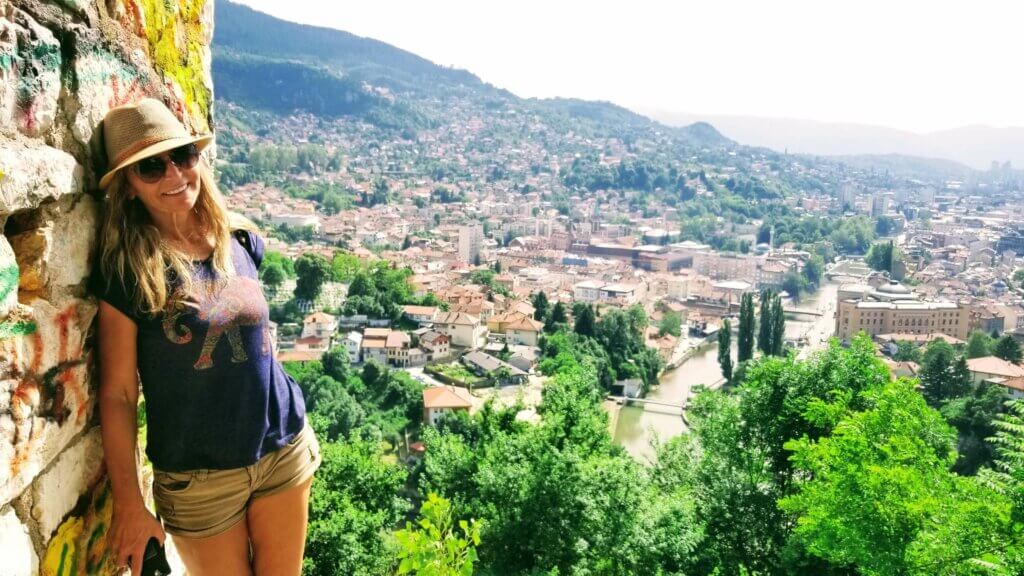
The Yellow Bastion still has some walls to show for itself and has stood as a fortification for this city since the 18th century. Both ruins are quite close to one another and serve as great viewpoints for the whole city. You can grab a drink at the lookout point of the Yellow Bastion and enjoy the view.
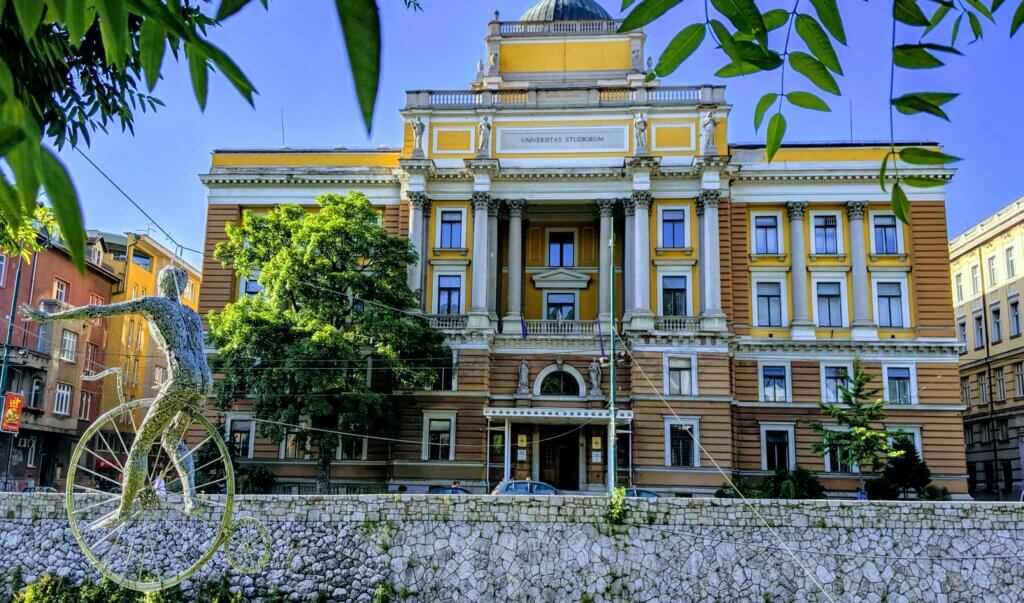
In this post my goal was not to review the must see and do things of this great city, like I did for it’s southern city, Mostar. I wanted to pay tribute to a resilient city and it’s people who may both carry visible scars yet they remain irrepressible.

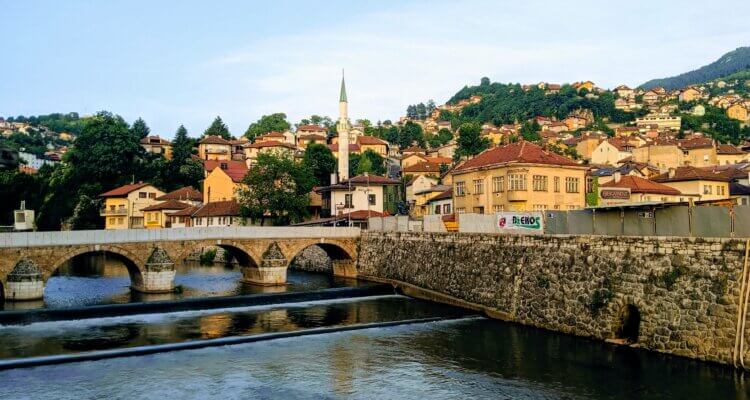
4 Comments
That was a very well stated article on Sarajevo, the new Yugoslavia (after Tito). It was amazing how the country was kept together after WWII and how the bloodshed was allowed to get out of hand in “modern” times. After the Olympics one would not expect the stadium to be used as a cemetery. Nice to see the city thriving today. Thank you Masha for bringing the city to our attention again. Hope massacres like this will never happen again.
Thanks so much, Joe! Appreciate you reading it and your comments. Such great people in a beautiful city 🙂